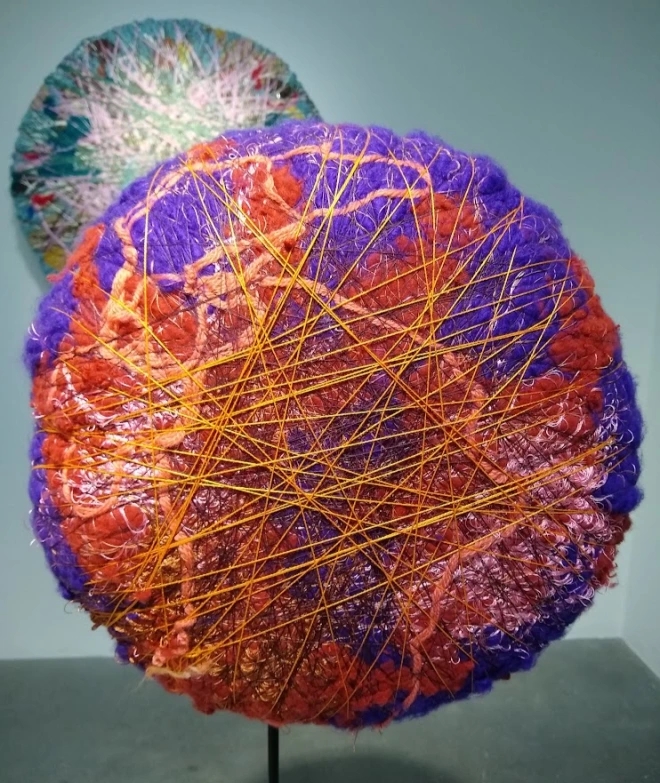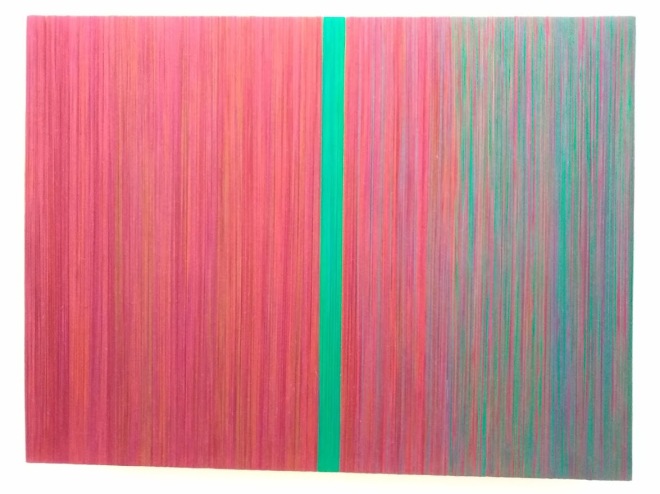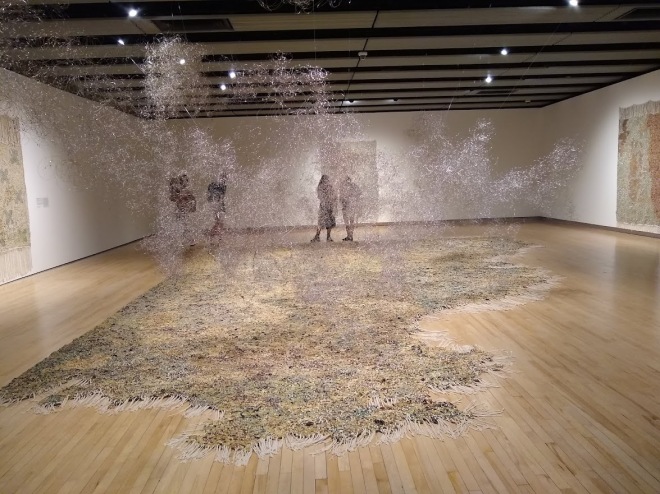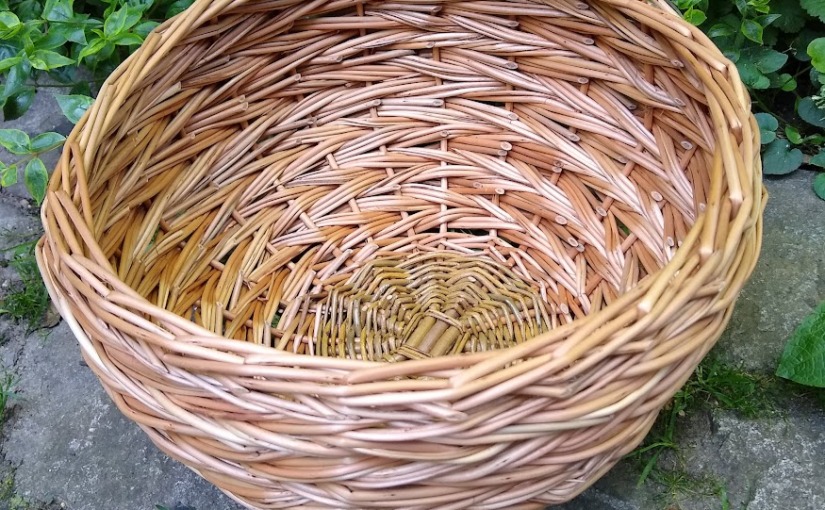Although the first year of the two-year City Lit Creative Basketry course finished in June, I signed up to do a four-week contemporary willow basketry course afterwards, as we don’t work much with willow on the two-year course and it’s an area where I would like to be more proficient.
The tutor was Debbie Hall of Salix Arts, who was new to teaching at City Lit but has run her own workshops for many years. She very generously brought in some of her home grown coloured willow for us to use alongside the standard buff and Black Maul the college normally provides, which was great.
We all started by making a standard 3×3 base, and then went our own ways when weaving up the sides. I wanted to try zigzag weave, and Debbie suggested using two different colours to emphasise the pattern more. I also thought I would use a piece of found wood as a handle, as my previous experience of cranking willow to make a conventional handle was not very successful. However, attaching the wood handle was really hard work, which made me think that cranking was not so bad after all!
Here’s the result – you can see that the wrapping on the handle is not very even!

Most of the other students in the class opted to practise rope weaving, which I’ve previously attempted by myself from a video tutorial. So I thought I would have a go at herringbone weaving, which is like alternating rounds of twining and reverse twining with rope weaving.
I was concentrating so much on the technique that I failed to keep an eye on the shaping, so the final bowl was rather misshapen (which you can’t see in the photo). The base was quite small (about 12cm in diameter), so when I put the 5ft stakes in for the uprights they kept falling out. I ended up using 3ft willow for the stakes, which I had always thought would be too spindly, but it worked OK.

It’s made me think that I should experiment with some small scale willow work, which would definitely suit better the space I have available!
Exhibitions
It’s been a busy month for visiting exhibitions now that I’ve been double jabbed and keen to venture into the outside world again.
First there were the colours and textures of Sheila Hicks at the Alison Jacques Gallery – great Rothko-like bands of colour and bobbly comets.




Over at the Hayward Gallery, Igshaan Adams is not an artist I’d heard of, but his combination of weaving and sculpture, inspired by indigenous dance of the northern cape of South Africa, blew me away. Clouds of dust created by the kicking performers were evoked by spiralling constructions of wire and beads, while weavings laid on the floor represented the desire paths created by local residents as they walked around.




Finally, a friend offered me a spare ticket to the much sought-after Hockney exhibition at the Royal Academy. A previous exhibition here in 2012 featured his first works made using an iPad, mixed with his drawings made more conventionally, and I remember being quite intrigued at the time. This time all the works were made with an iPad, and what struck me was the limitation of digital mark making. Not only was everything very flat, but in many works the repetitiveness and regularity of the marks was very obvious – it often felt like digital potato printing. (We were not allowed to take photos, so there are no images.)
Maybe working with textiles, where texture and hand-made irregularities are such a feature, caused my indifference. Where the technology did come into its own was in the animations depicting streaming rain or showing the process of creating the work.
A word about the future
Finally, a heads-up about the future of this blog – you are the first to know!
As you may have noticed in the past couple of years, my focus is moving away from upcycling readymade items and more towards sculptural basketry. So in the next few weeks I will be launching a new website and phasing out Flextiles. I’m not sure yet whether the new site will have a blog, but I will post the link here when it’s ready.
I’ll be resurrecting my email newsletter (which has been dormant during the pandemic), so if you signed up previously under Flextiles you will continue to receive this (you can of course unsubscribe at any time).
This blog will remain open for people to read, and I’d like to thank everyone who has read, followed, liked, and commented over the years. It started out in January 2011 as a personal journal of what I was learning in my textiles evening classes, but more than 10 years later it’s become much more to me, creating connections with so many people around the globe who share a love of, and curiosity about, the world of textiles. Please do stay in touch during the next phase of this journey!
Kim x
